Teo Chew Temple
- Religious.
STOA Architects
Houston, Texas
Undisclosed
3.4 acres
Completed (1999)
Description.
The Teo Chew Temple in Houston, built in 1999 and dedicated to Mazu, features traditional Chinese architecture with ornate carvings, a sloping roof, and symbolic sculptures of dragons and phoenixes.
The Teo Chew Temple in Houston, Texas stands as a striking example of traditional Chinese temple architecture established by the Teo Chew Association of Houston in 1999. Dedicated to the worship of Mazu, the goddess of the sea revered in Teochew culture, the temple features a rectangular shape with a sloping roof and traditional Chinese-style roof decorations, such as clay sculptures of dragons and phoenixes. Its exterior is adorned with intricate carvings and vibrant colors, creating a welcoming and awe-inspiring atmosphere for visitors.
Features.
Interior Space
Exterior Space
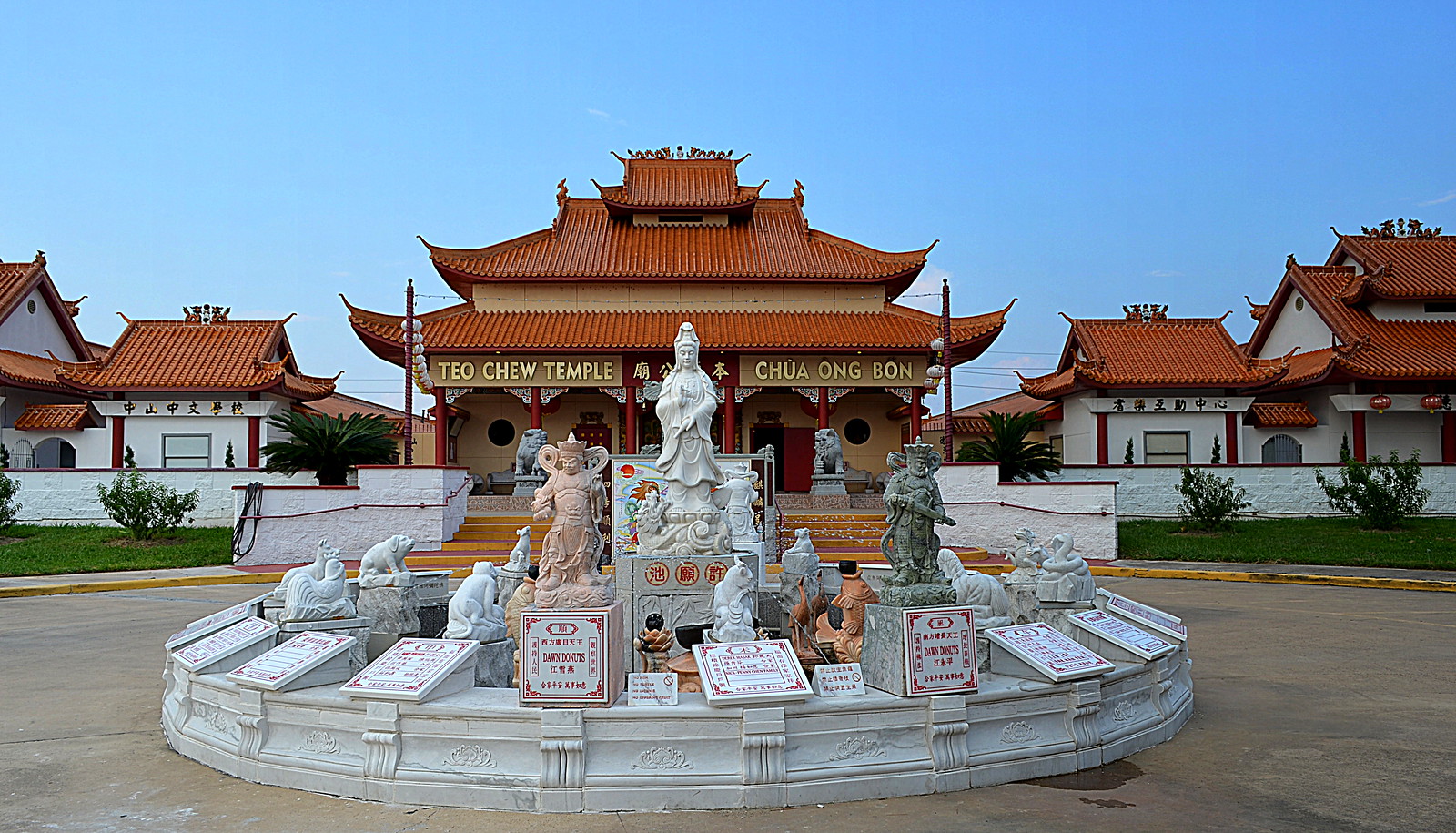
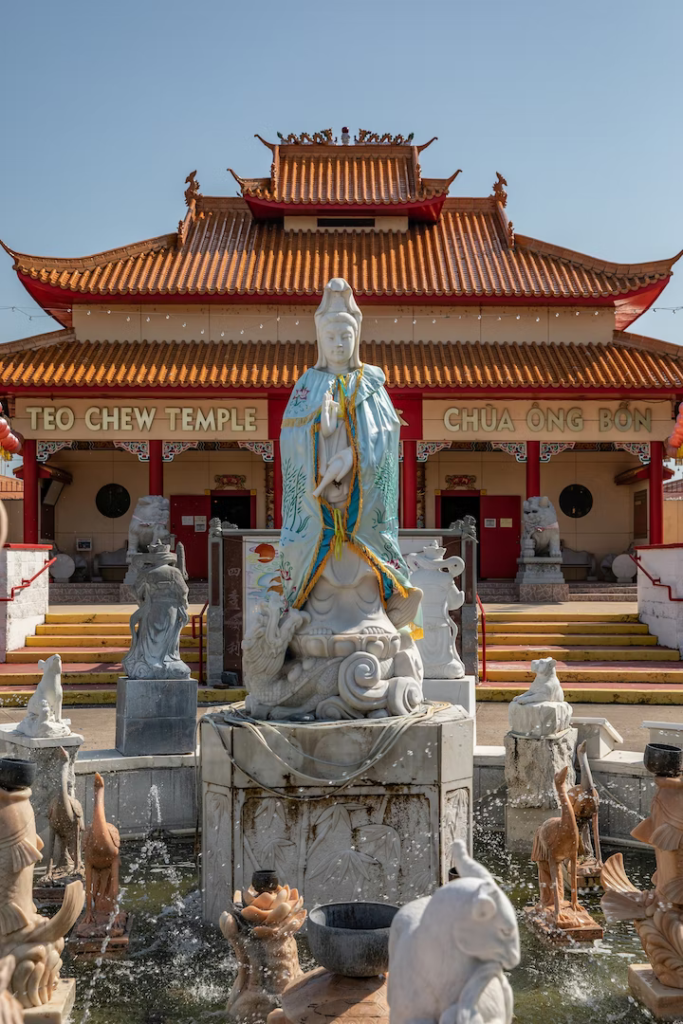

The Teo Chew Temple functions as a spiritual and cultural landmark, with architectural elements designed to support religious rituals, honor deities, and reflect traditional Chinese values and symbolism.
Function.
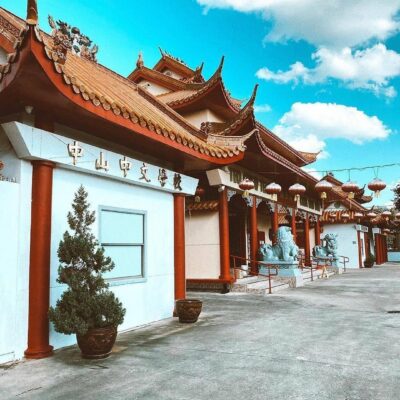
Cultural Expression
The Teo Chew Temple’s exterior features a sloping roof, red pillars, and dragon and phoenix sculptures symbolizing protection and prosperity.
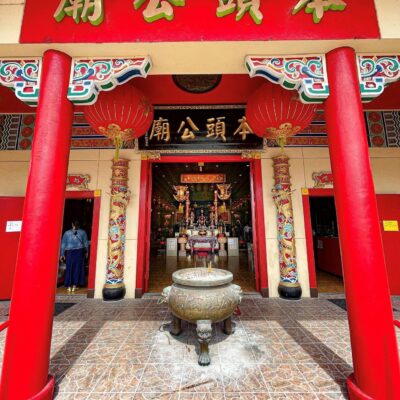
Ritual Facilitation
The design supports religious rituals and offerings, with altars, incense burners, and deity sculptures placed in spatially significant locations.
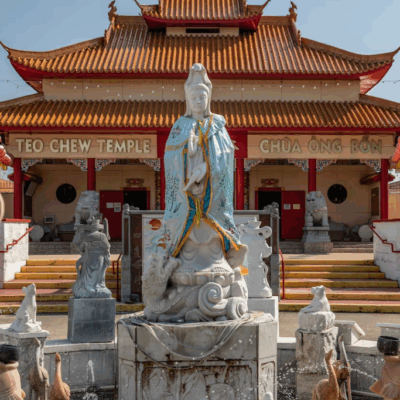
Symbolic Statues
The temple’s architecture embodies traditional Chinese cosmology, with elements like dragons and phoenixes symbolizing protection and harmony.


3.4 acres
Design + Culture.
The temple’s interior design creates a serene and contemplative ambiance with its clean lines and simple decor. The central altar, which is the temple’s focal point, houses the temple’s deities in an ornate wooden structure adorned with offerings such as incense, fruit, and flowers used in religious ceremonies. The murals on the temple’s walls depict scenes from Chinese mythology and history, such as the story of the Monkey King and other legends. In addition, large circular lanterns bathe the space in a soft, warm light, creating an inviting atmosphere. As a result, the Teo Chew Temple’s design provides visitors with a unique and immersive glimpse into the rich cultural heritage of the Teo Chew people.


